It was two years ago that I visited the Azores for the first time and first got a glimpse of São Jorge. From Pico Island, the unusually elongated neighbouring island seemed to beckon me from across the water.
“Oh, São Jorge?” my guide said when I pointed at it. “I guess that island has potential.”
“It’s nice, but tourists don’t really go there.”
Since I was on a fixed itinerary that didn’t include São Jorge, I didn’t really go there either. Still, my curiosity was piqued by my guide’s almost casual dismissal, making me wonder just what secrets it might harbour.
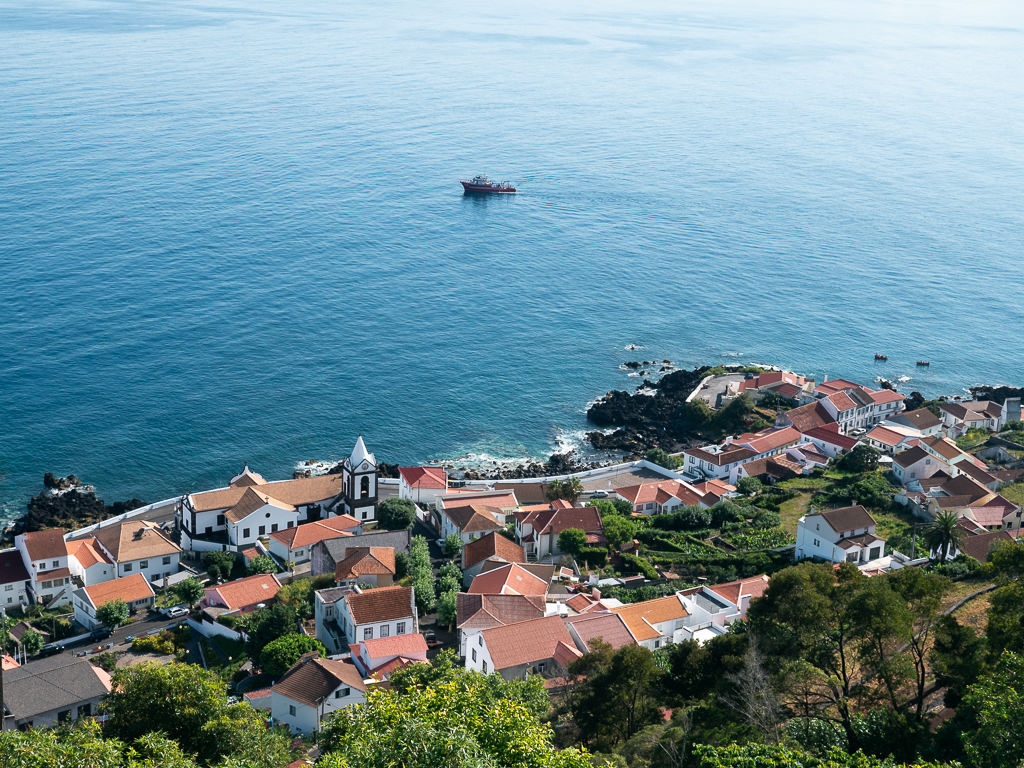
Heading back to the Azores, this time travelling with friends and on our own schedule, I knew I had to see it for myself.
And as I am sure you have guessed, São Jorge is simply incredible.
Plan your trip to Sao Jorge
The island of the fajãs
Approaching São Jorge’s port at Velas by ferry, it’s striking how its rugged and jagged coastline rises sharply from the ocean.
The geography of this island makes São Jorge unique within the Azorean archipelago. A central mountain range runs along almost its entire length, creating a formation similar to a plateau with major elevation drops down to the shore.
At sea level, dotted at the base of the cliffs, you’ll find many small plains called fajãs, which were once formed by lava flows or ancient landslides. Many of these fajãs are home to tiny villages, some connected by winding paved roads, while others can be reached only by foot.
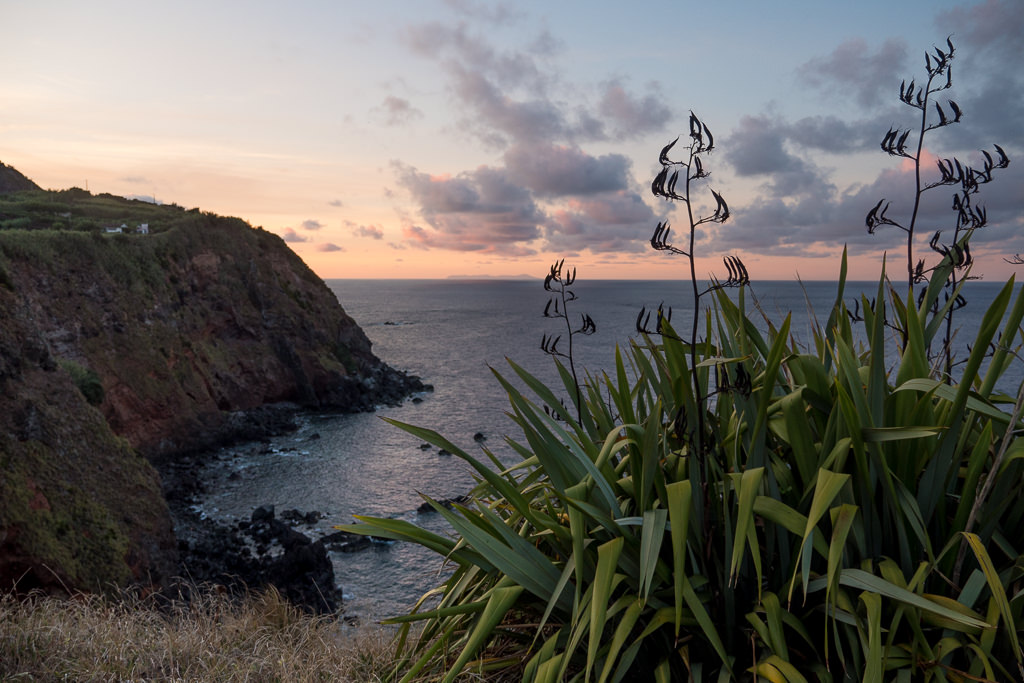
Although other islands of the Azores may have one or two fajãs, São Jorge has over 40, and it’s a joy to discover them. I spent an entire day driving along their winding roads lined with blue hortensias, going down into the fajãs, and stopping in the villages for fresh seafood or a swim.
In the fajã de São João (population: 7), we jumped off the fishermen’s docks for a refreshing swim in the sea. Despite being in the middle of the Atlantic, the water was just the right temperature in August.
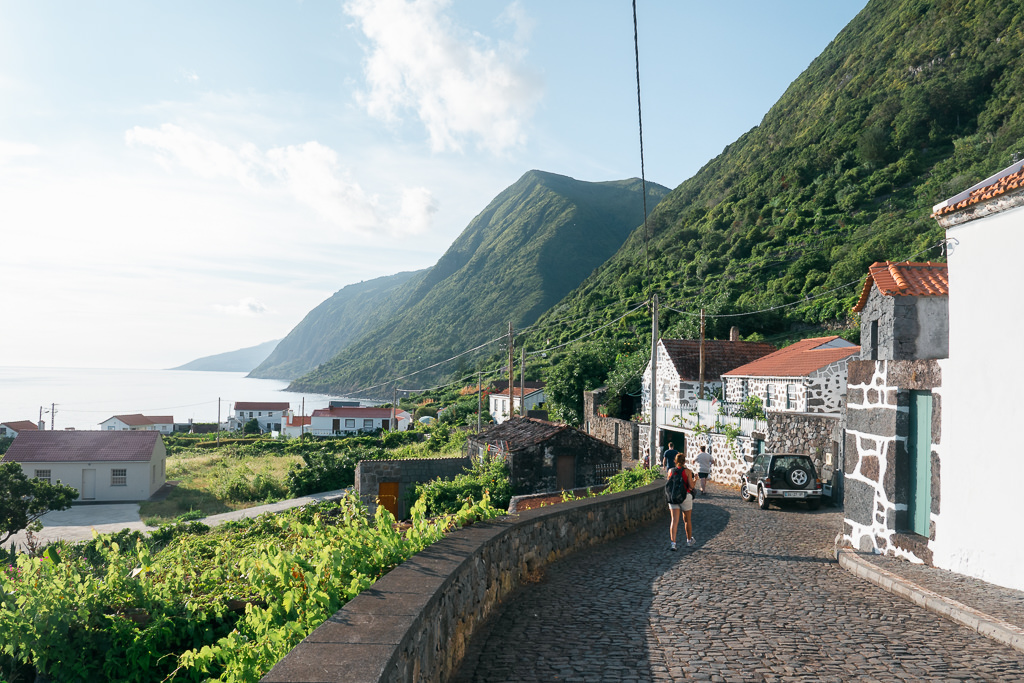
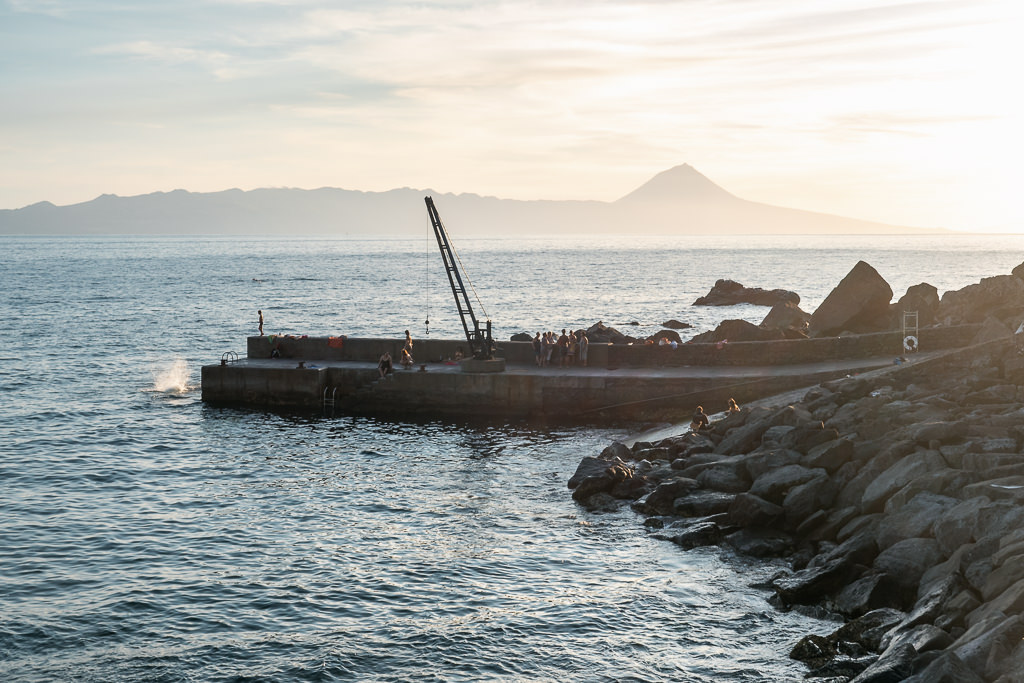
While drying off after my swim, enjoying the beautiful ocean view with the conical contours of Mt. Pico in the distance, I noticed a strange shape moving in the water. As I watched, it grew larger and came closer before I realised it to be the head of a scuba diver swimming towards the harbour. He finally walked ashore carrying a big speargun and bucket filled with fish, which he promptly began filleting, under the watchful eyes of a village cat and some curious children.
As surprising as it was for a random spearfisherman to show up from seemingly nowhere, it’s a scene that felt emblematic of São Jorge, a tranquil and rural place where local life just goes on as it ever does.
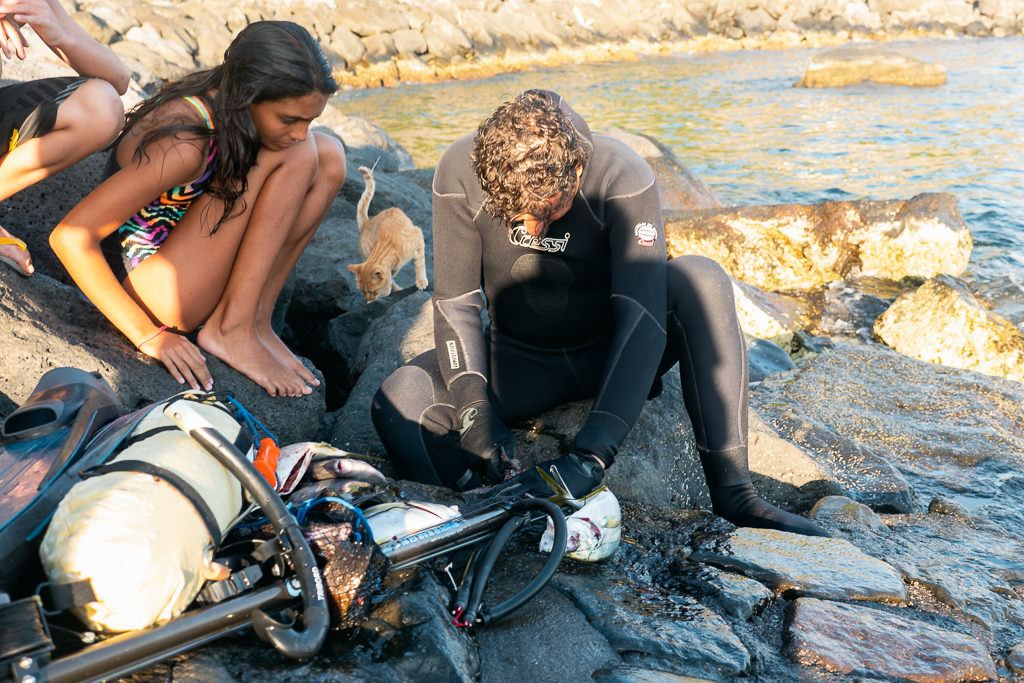
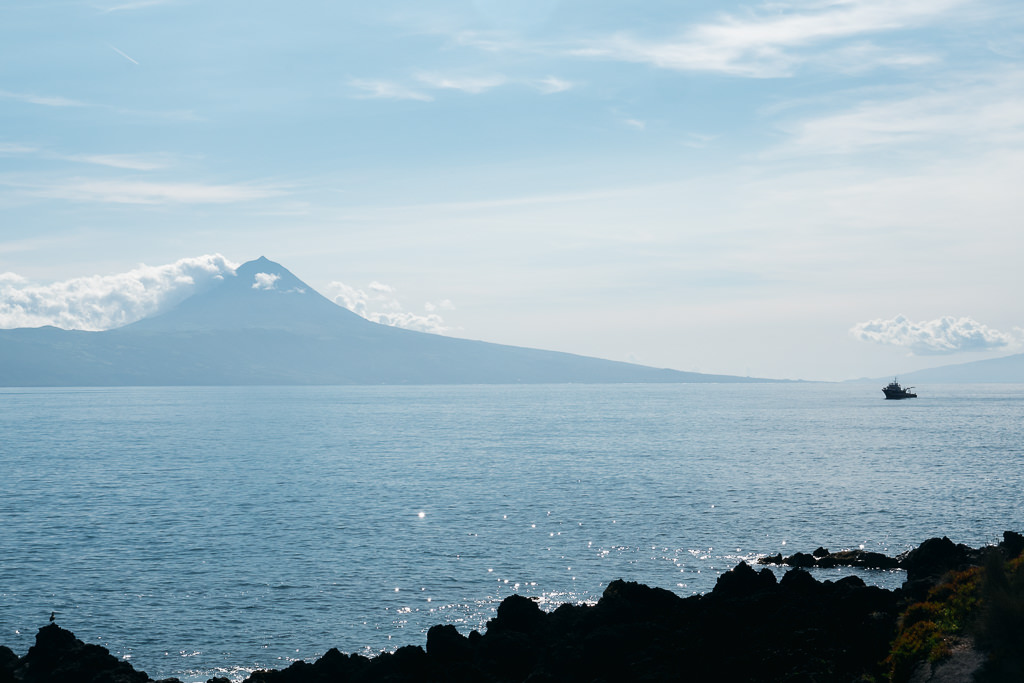
The Caldeira de Santo Cristo hike
I dedicated my second day on São Jorge to hiking the trail of Caldeira de Santo Cristo, which incidentally became the absolute highlight of my stay. The path begins on the mountain plateau with a downhill walk to several fajãs lasting about three hours before ending in Fajã dos Cubres.
Despite the pouring rain and clouds sadly obscuring several of the best views, I consider this one the best hikes I’ve done in a long time, which is a testament to the sheer beauty of this island.
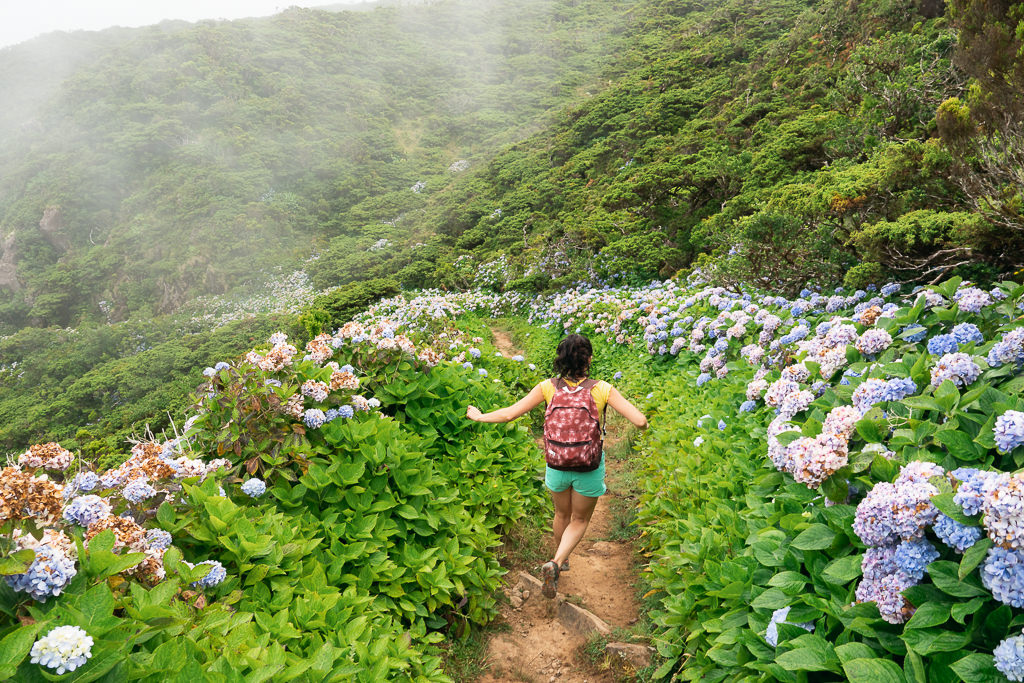
The trail passes through a variety of landscapes with some astounding fauna. The hike starts with a zig-zagging walk past cow pastures dotted with small forests filled with blue hortensias, juniper bushes, and tons of yellow ginger lilies before continuing through a lush valley with a series of impressive waterfalls.
The variation of plant life and trees makes hiking on the Azores a sheer joy. This vegetation thrives because of the islands’ varied climate and changeable weather. Still, because of its location along historical trade routes, many plant species are not native to the Azores. For instance, the yellow ginger lilies are native to the Himalayas, initially from India and Nepal; even though they are considered an invasive species, it’s still a delight to walk through a sea of these yellow flowers.
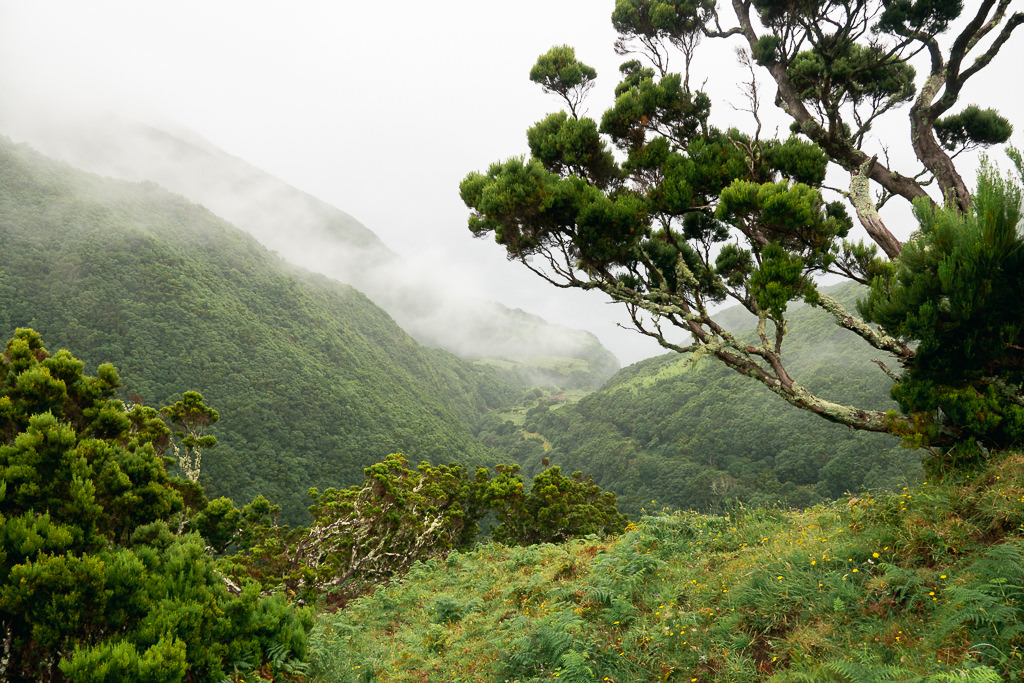
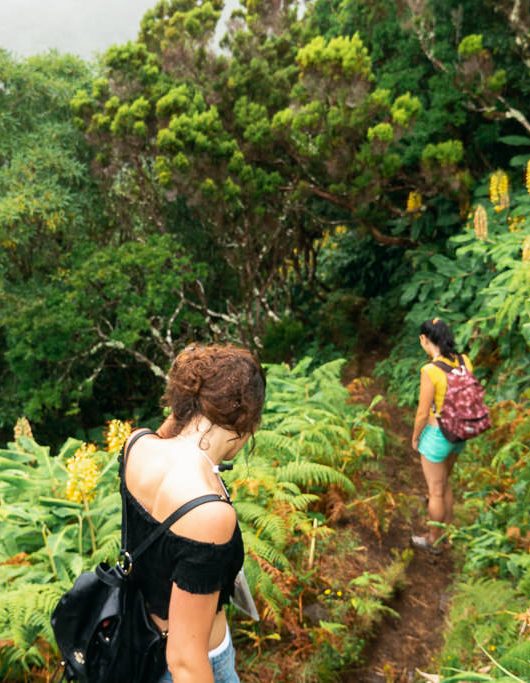
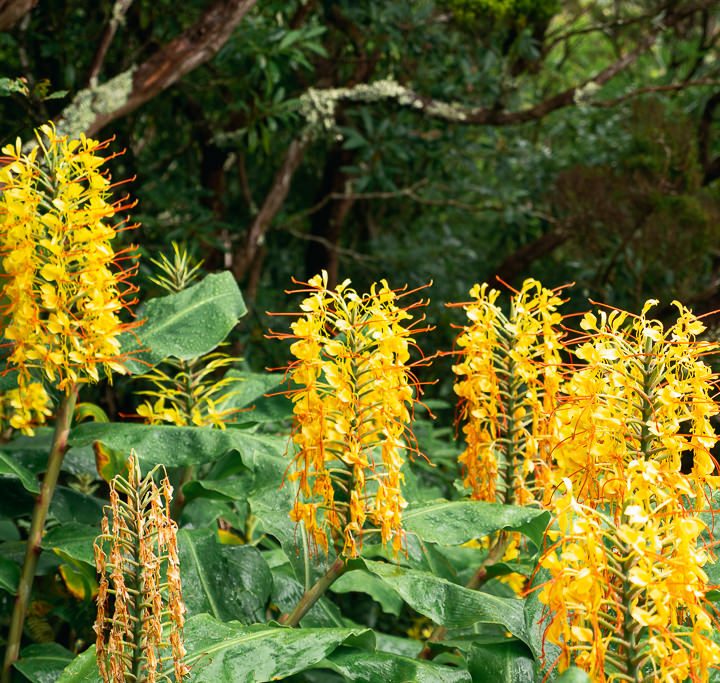
On the Azores, it is known that you can experience all four seasons in a single day. On this particular day, the weather lived up to its reputation, rapidly turning from hot and sunny to raining cats and dogs for most of the trail. Undeterred by the rain, we managed to swim a pool at the foot of one of the many waterfalls. Soon after, the forest opened up to reveal the coastal cliffs and the first fajã in the distance.
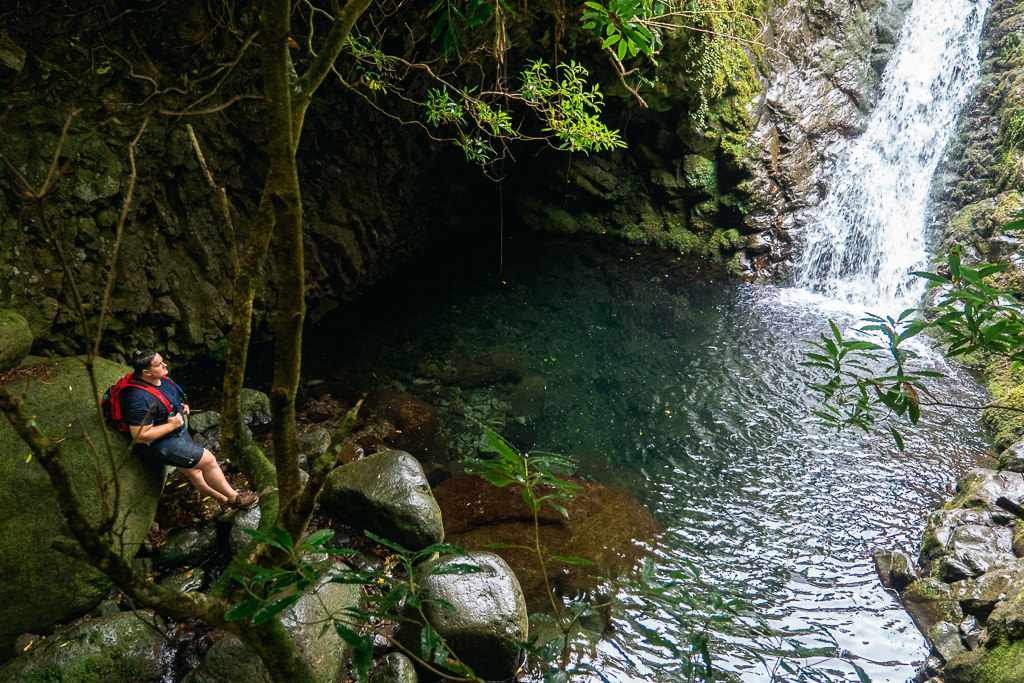
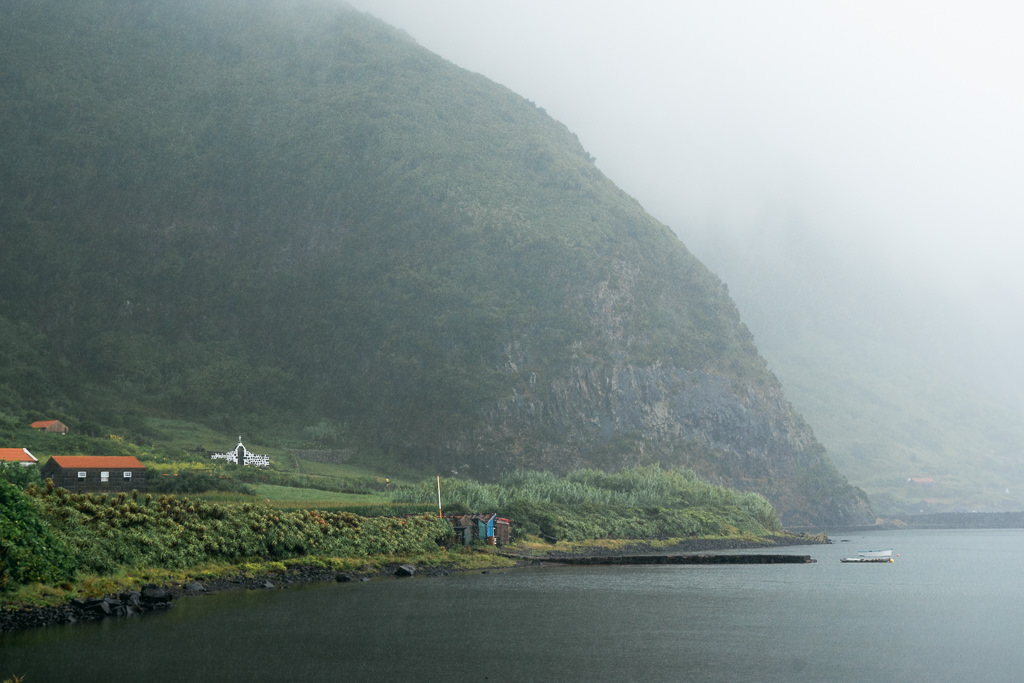
It seemed mainly fishermen and farmers living around these parts, with just a handful of tourist B&Bs dotted around. Some of the fajãs are entirely cut off from any roads, with locals using small ATVs to drive on dirt paths between them.
After passing a few more epic waterfalls cascading from the cliffs above, we found that one of the waterfalls had flooded the road due to the heavy rain, which meant we had to wade through the water to make it across.
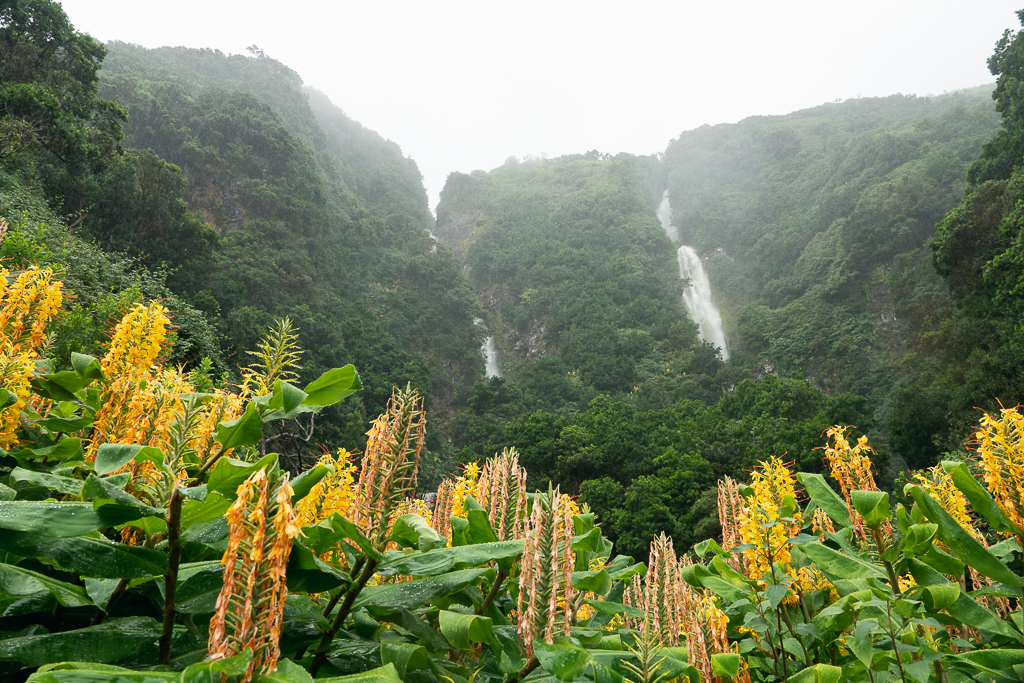
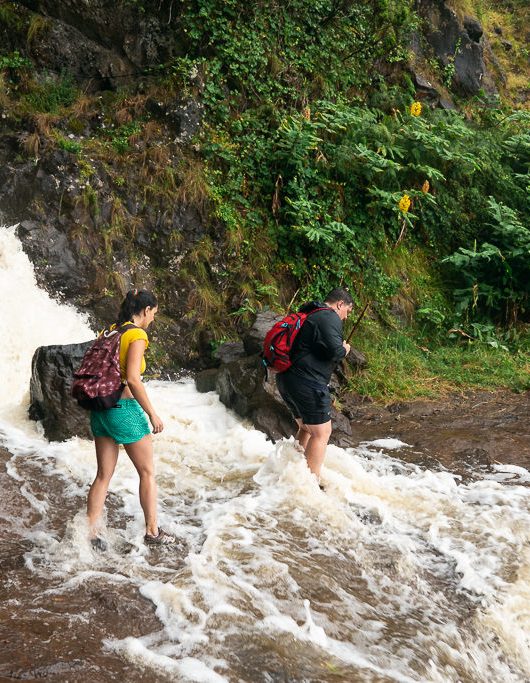
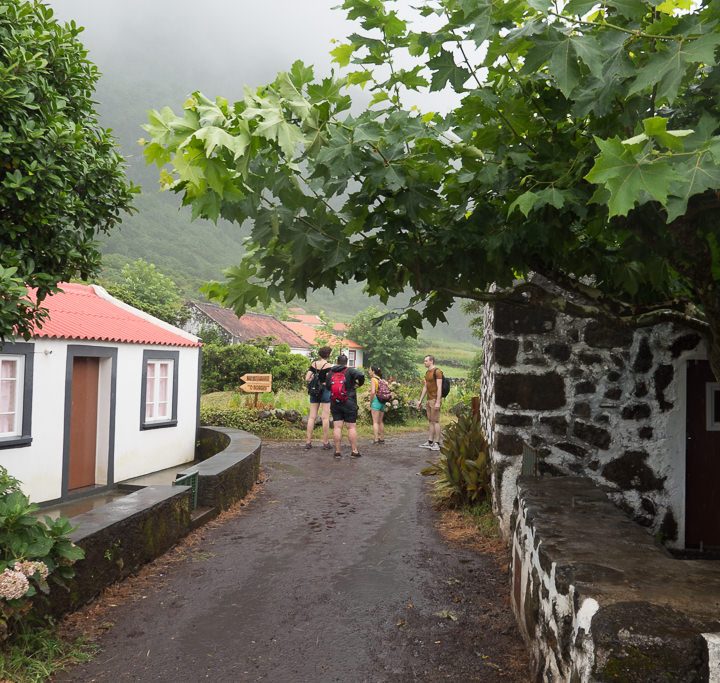
Our soaking hike was worth it, as when we had completed the trail and could finally warm ourselves in a tavern with some stiff shots of local aguardiente.
This is a linear hike of 9.5 km and takes around 2,5 hours. The trailhead is next to a parking area [map] along the main EN2 road. The walk ends in Fajã dos Cubres, from where you can call a taxi to get back to the starting point. You can find more instructions on the official site.
Tips for visiting São Jorge
While São Jorge became one of my favourite places in the Azores, I should mention it doesn’t have nearly as many tourist facilities, attractions, or restaurants as some of the other islands. São Jorge is best if you enjoy straying off the beaten path for your adventures.
A day trip to São Jorge can easily be made from nearby Pico or Faial and would be sufficient if you really just want a taste. Or, you could also opt to stay for several days if you prefer to take it slow and enjoy the remoteness and quiet atmosphere.
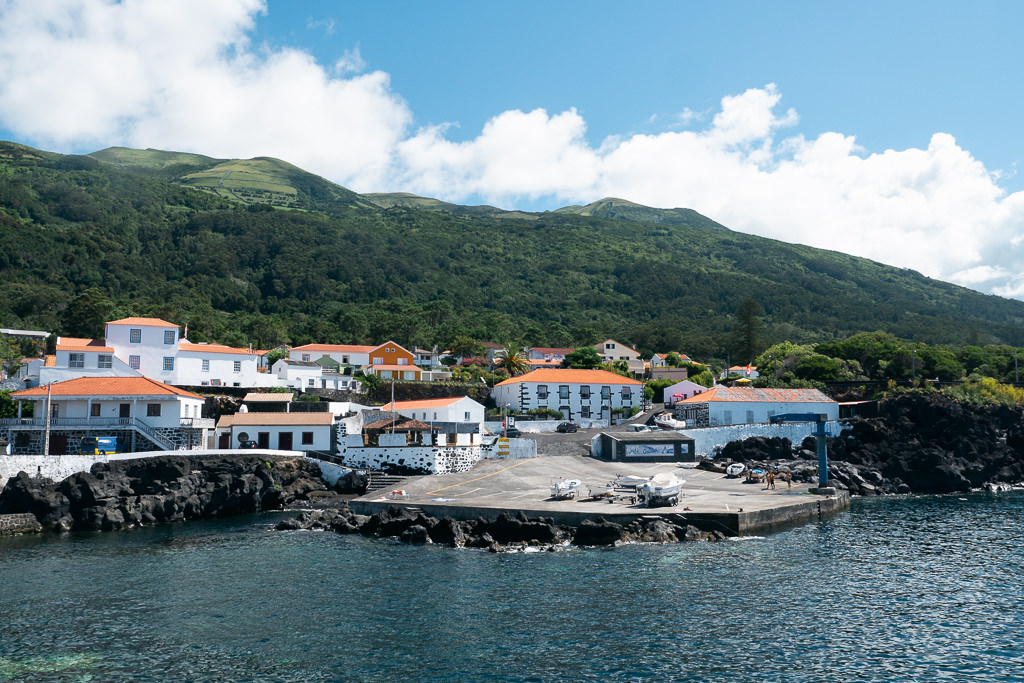
Despite having fewer tourist attractions, São Jorge is one of the greenest, most scenic, and for me, most memorable islands of the archipelago. If you’ve come to the Azores simply to see charming villages and hike in beautiful nature, then São Jorge is an island you don’t want to miss.
São Jorge does offer some more exciting activities as well. AvenTour Adventures and Discover Experience Azores offer a range of sports and activities such as canyoning, coasteering, abseiling, and rock climbing.
In the tranquillity of São Jorge, one thing to know is that restaurants are typically closed outside of peak hours. My friends and I stayed in an Airbnb in the town of Calheta, where the only restaurant closes its kitchen at 9 pm. For lunch, all we could find were some hotdogs at a minimarket. We had to drive around a fair bit several times before we finally found a seat at a table.
Initially, I thought we’d been unlucky, but then I heard that other travellers also struggled with this. So, keep in mind there are few restaurants with limited hours, so it may be easier self-cater, or at least to plan and make sure your chosen restaurant will be open.
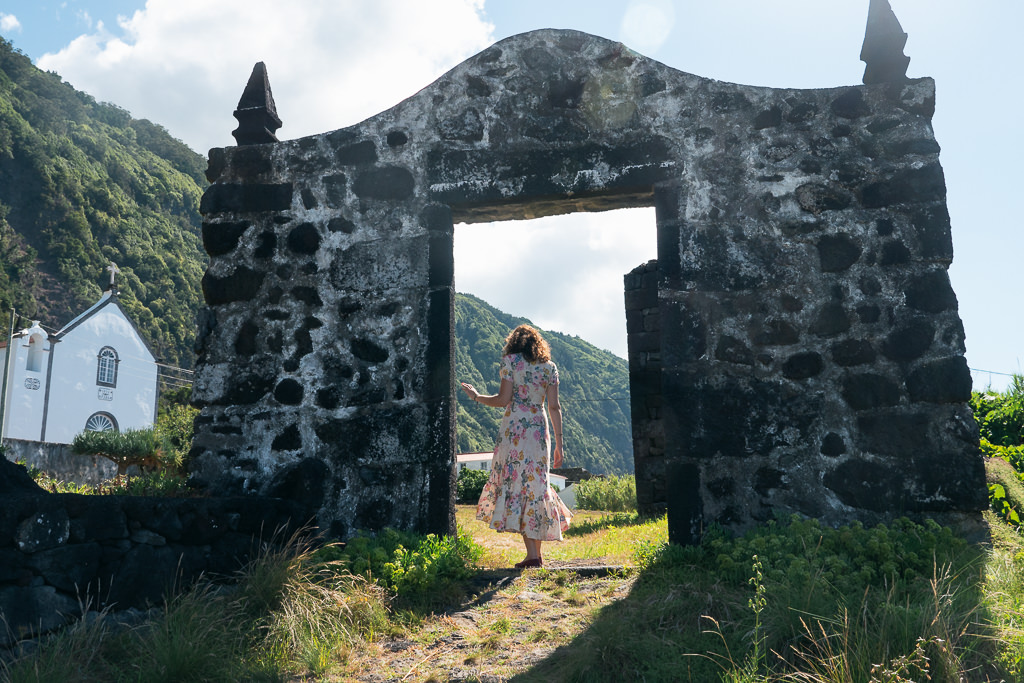
Do you need a car in São Jorge?
To explore São Jorge properly, you will definitely need to rent a vehicle. During the August high season, our compact car cost about €20 a day. You can compare car rental prices from several suppliers on DiscoverCars.com. There is limited stock on the island, so it’s highly worth booking ahead if you visit during the summer.
Where to stay in São Jorge
For hotel accommodation with access to a pool, I suggest the São Jorge Garden Hotel, which is in the main town of Velas. You can check availability on Expedia or Hotels.com.
If you’re looking for something a little more upscale, check out the gorgeous boutique hotel Quinta da Magnólia (view at Expedia, Hotels.com or Booking). It’s in a village a little drive further down the coast.
For holiday homes, apartments, or cottages, my favourite booking site to check is Booking.com, or you can browse around using the map below.
Where to next? Read more about Pico Island, which is just opposite of São Jorge, and home to wineries, lava caves, and the Azores’ tallest peak.
Some links may be affiliate links, meaning I may earn commission from products or services I recommend. For more, see site policies.
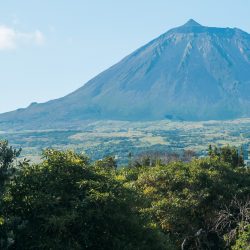
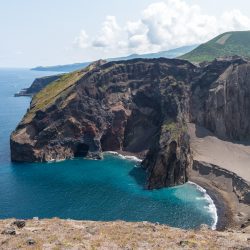




Thank you for proving that Pico “guide” very wrong
Sao Jorge island as you yourself discovered has much beauty and much to offer… As a “Jorgense ” I am very proud of where I was born and spent some of the best years of my life… I miss it dearly.
You’re very lucky to have grown up there! Such a gorgeous place
hi! can you please tell me what time of a year did you go to Sao Jorge. i am wondering when Hydrangea bloom and i see you got them on the trail a lot. thank you in advance
Hey, I’ve been to the Azores in February, July, and August. In July and August there was lots of hydrangea bloom. I’ve heard they bloom mostly from May till September. This trip to Sao Jorge was in early August.
Hi Marek,
Thank you so much for bumping up your Azores articles ! I’ve just spent 2 weeks there (last minute planning FTW), and your resources helped me a lot to prepare that trip. I’ve seen São Miguel, Faial, São Jorge & Pico, and São Jorge probably was my favorite one as well. It may be a bit rough, but it has some wild beauty and authenticity that I really liked (and that I didn’t find on other islands). I also enjoyed spending some time in the small fajãs, so peaceful and nice, feels like being out of space and time…
My walk down the Santo-Cristo trail was sunny (lucky me !), and it was my most beautiful hike since a long time ! For the record, they finally started the works to bring electricity down there (along the shore, not down the hill).
All the best, greetings from Belgium !
Seb.
Hey Seb, I’m so glad you made it to Sao Jorge! I did bump up some of the posts after my latest visit this summer. I know you’re quite a fan of less touristy places and I also thought Sao Jorge was still very pure. Hope you’re well and all the best from Lisbon 🙂
Hi Marek! I am Portuguese and I’m super glad you enjoyed visiting our islands. I have been to Sao Miguel a few years ago and it’s paradise…
I actually wanted to ask you something about SE Asia that I’ve been struggling with. How would you include 1 month in the Phillipines considering you are travelling from January to April, starting in Bangkok? I’m really confused because I want to go to the Phillipines but I’ve read that February is the best month, and that would interrupt my mainland route. Should I skip it altogether, or do you think it’s doable? I’m also on a budget. I would be very thankful if you could share your opinion on this with me, it will be my first long solo travelling journey. Thank you so much and congratulations for your amazing work 🙂
Ola Cristiana! I think the ‘best time to visit’ in travel guides can be a useful guideline but you shouldn’t get too hung up on it either. I traveled in the Philippines in April and it was great! Average temperatures are 2 or 3 degrees more than in Feb but that’s all. I’d just do your mainland route and then finish in the Philippines. If you’re there around Good Friday or Easter you can experience some fascinating events/festivals btw. 🙂
Oh wow, I’ve never heard of São Jorge Island before so I am glad I read your post. It looks completely calm and beautiful! Isn’t it a shame that the flowers that make the path so beautiful are an invasive species!